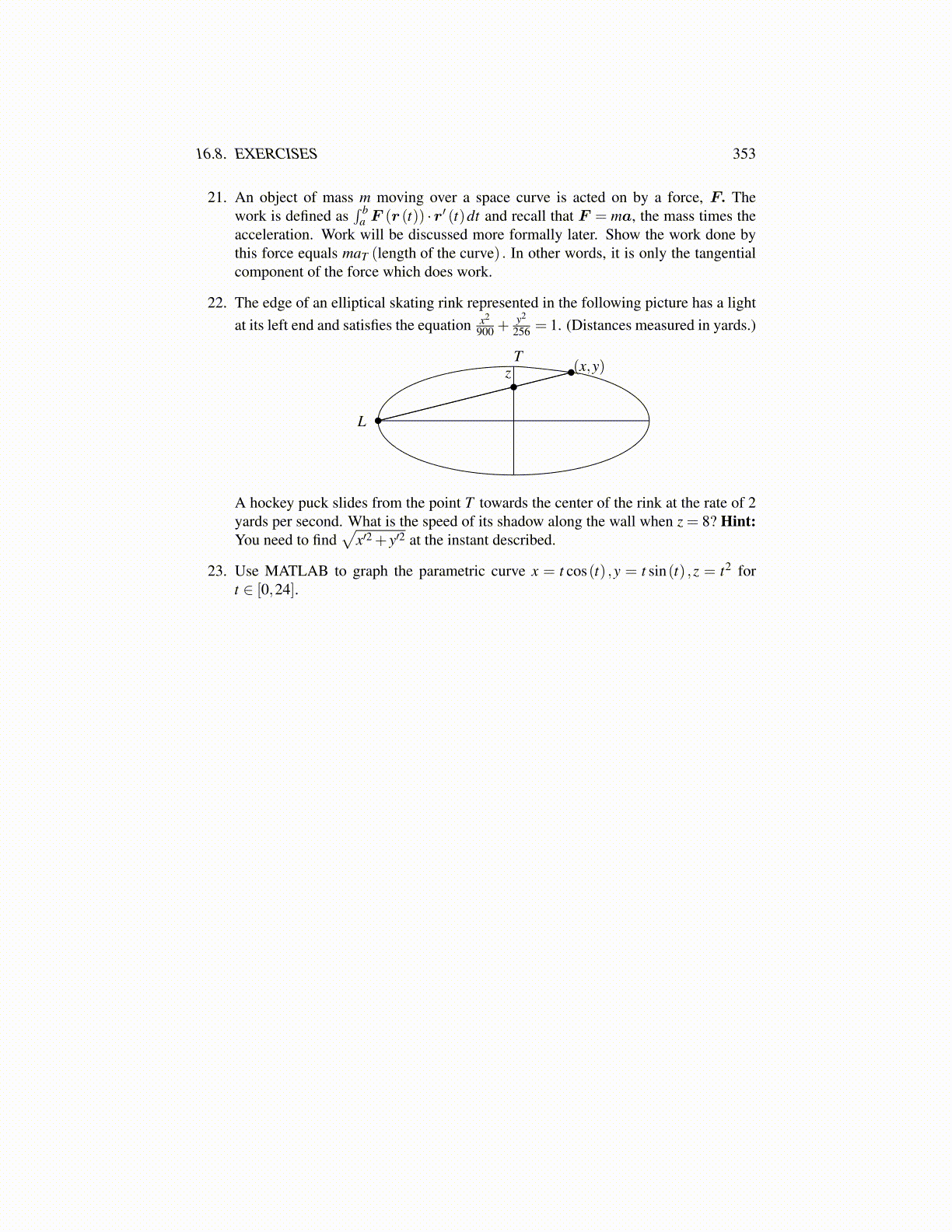
Chapter 17
Some Physical Applications17.1 Spherical and Cylindrical Coordinates
There are two extensions of polar coordinates to three dimensions which are importantin applications, cylindrical and spherical coordinates. These will be studied much morein multi-variable calculus but it is convenient to give an introduction to these here. It isimportant to understand the geometric significance of these coordinate systems. When youremember the geometric meaning of the spherical coordinates, they are not too bad, but ifyou try to ignore this, you will be constantly confused about what you are trying to do.
Cylindrical coordinates are defined as follows.
x(r,θ ,z) ≡
xyz
=
r cos(θ)r sin(θ)
z
,
r ≥ 0,θ ∈ [0,2π),z ∈ R
Spherical coordinates are a little harder. These are given by
x(ρ,θ ,φ) ≡
xyz
=
ρ sin(φ)cos(θ)ρ sin(φ)sin(θ)
ρ cos(φ)
,
ρ ≥ 0,θ ∈ [0,2π),φ ∈ [0,π]
The following picture relates the various coordinates.
x1 (x1,y1,0)
y1
(ρ,φ ,θ)(r,θ ,z1)(x1,y1,z1)
z1
ρ
rθ
φ
•
x
y
z
In this picture, ρ is the distance between the origin, the point whose Cartesian coor-dinates are (0,0,0) and the point indicated by a dot and labelled as (x1,y1,z1), (r,θ ,z1),and (ρ,φ ,θ). The angle between the positive z axis and the line between the origin andthe point indicated by a dot is denoted by φ , and θ is the angle between the positive xaxis and the line joining the origin to the point (x1,y1,0) as shown, while r is the lengthof this line. Thus r = ρ sin(φ) and is the usual polar coordinate while θ is the other polarcoordinate. Letting z1 denote the usual z coordinate of a point in three dimensions, likethe one shown as a dot, (r,θ ,z1) are the cylindrical coordinates of the dotted point. Thespherical coordinates are determined by (ρ,φ ,θ). When ρ is specified, this indicates thatthe point of interest is on some sphere of radius ρ which is centered at the origin. Then
353